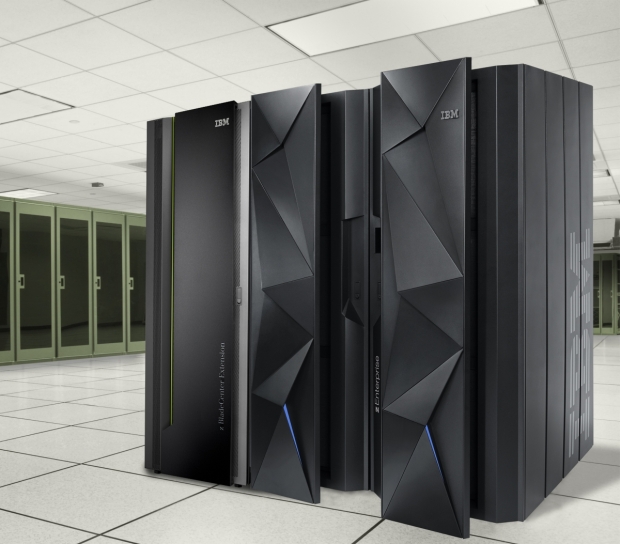Mainframes are still a major part of the Systems and Technology Group at IBM, which overall contributed 10.8 percent of IBM's total 2014 revenues of $92.8 billion. But the z Systems and their predecessors also generate revenue from software, leasing and maintenance and thus have a greater financial impact on IBM's overall picture.
The new mainframe's claim to fame is to use simultaneous multi-threading (SMT) to execute two instruction streams (or threads) on a processor core which delivers more throughput for Linux on z Systems and IBM z Integrated Information Processor (zIIP) eligible workloads.
There is also a single Instruction Multiple Data (SIMD), a vector processing model providing instruction level parallelism, to speed workloads such as analytics and mathematical modeling. All this means COBOL 5.2 and PL/I 4.5 exploit SIMD and improved floating point enhancements to deliver improved performance over and above that provided by the faster processor.
Its on chip cryptographic and compression coprocessors receive a performance boost improving both general processors and Integrated Facility for Linux (IFL) cryptographic performance and allowing compression of more data, helping tosave disk space and reducing data transfer time.
There is also a redesigned cache architecture, using eDRAM technology to provide twice as much second level cache and substantially more third and fourth level caches compared to the zEC12. Bigger and faster caches help to avoid untimely swaps and memory waits while maximisng the throughput of concurrent workload Tom McPherson, vice president of z System development, said that the new model was not just about microprocessors, though this model has many eight-core chips in it. Since everything has to be cooled by a combination of water and air, semiconductor scaling is slowing down, so "you have to get the value by optimizing.
The first real numbers on how the z13 is selling won't be public until comments are made in IBM's first-quarter report, due out in mid-April, when a little more than three weeks' worth of billings will flow into it.
The company's fiscal fortunes have sagged, with mixed reviews from both analysts and the blogosphere. Much of that revolves around IBM's lag in cloud services. IBM is positioning the mainframe as a prime cloud server, one of the systems that is actually what cloud computing goes to and runs on.




